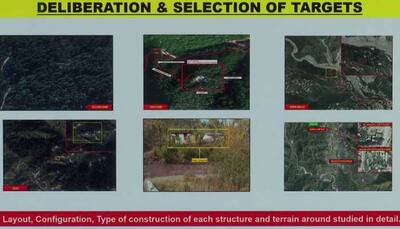New Delhi: India’s missile blitz has left Pakistan’s military command rattled. After the May 10 precision strikes on the Nur Khan airbase shattered critical infrastructure, the Pakistan Army is now mulling over shift its General Headquarters (GHQ) out of Rawalpindi to a more “secure” location, possibly within the capital or deeper into the hinterlands. What was once a symbol of military control is now seen as a soft target, forcing a hasty rethink of security and strategy.
The Indian Air Force’s deep-strike capability came into focus after satellite images confirmed significant structural damage at the Nur Khan airbase, which located close to the GHQ. The site is no ordinary airstrip, it houses Pakistan Air Force’s transport fleets, aerial surveillance systems and refuelling aircraft. It also sits alarmingly close to Pakistan’s nuclear command infrastructure and the Strategic Plans Division.
Satellite imagery from India’s Kawa Space and China’s MIZAZVISION confirmed collapsed fuel infrastructure, fire-damaged hangars and destroyed drone storage depots. Sources claim that the strike “severed critical operational links between PAF command and its frontline units”.
Pakistan Army Chief General Asim Munir was reportedly shifted to an underground bunker shortly after the strikes – a move seen as precautionary but also revealing. The sources suggest that VIP security protocols were heightened across Rawalpindi and emergency meetings convened to discuss vulnerabilities.
The GHQ’s location in the densely populated Chaklala region – with little geographic or topographical cover – has now become a strategic liability. Reports suggest the Army is exploring options in Islamabad, Balochistan and even Khyber Pakhtunkhwa, areas where mountainous terrain may offer natural defences.
As of now, there has been no formal announcement from the Pakistani government or military, but sources indicate urgent deliberations are ongoing. The silence, analysts say, speaks volumes.
Officials called the GHQ relocation plan “an admission of strategic failure”. A senior defence source remarked, “This is not just a tactical move. It is a clear sign that Pakistan’s command infrastructure has been compromised to the point of no confidence.”
“Relocating a military headquarters is not plug-and-play. It is a logistical and financial nightmare, especially for a country already struggling with economic collapse,” he said.
India’s use of high-precision munitions, including BrahMos, HAMMER and SCALP, in a coordinated strike across 11 targets sent shockwaves through Pakistan’s defence establishment. The message was unmistakable: strategic depth, once thought to be a Pakistani strength, now lies well within the reach of Indian airpower.
Once a symbol of Pakistani air mobility and deterrence, the Nur Khan airbase now represents a vulnerability exposed – not just to India, but to the international community watching closely.
India’s Operation Sindoor and its continued fallout have changed the equations on the subcontinent. For Pakistan, the very nerve centre of its military now seems too exposed to defend and too important to lose.
The GHQ is not just moving locations. It is dragging along Pakistan’s battered illusion of invincibility.
Chinese Tech, Indian Test
The attack also reignited concerns about the reliability of Chinese-made defence systems deployed by Pakistan. The HQ-9 and LY-80 air defence platforms reportedly failed to intercept incoming drones and missiles.
Officials said the strikes revealed “gaps in radar overlaps and electronic warfare capabilities”, especially around critical sites near the capital.
Pakistan’s heavy reliance on Chinese military hardware – exposed multiple times during Operation Sindoor – appears to have again fallen short under real-world pressure.
Stay informed on all the , real-time updates, and follow all the important headlines in and on Zee News.








